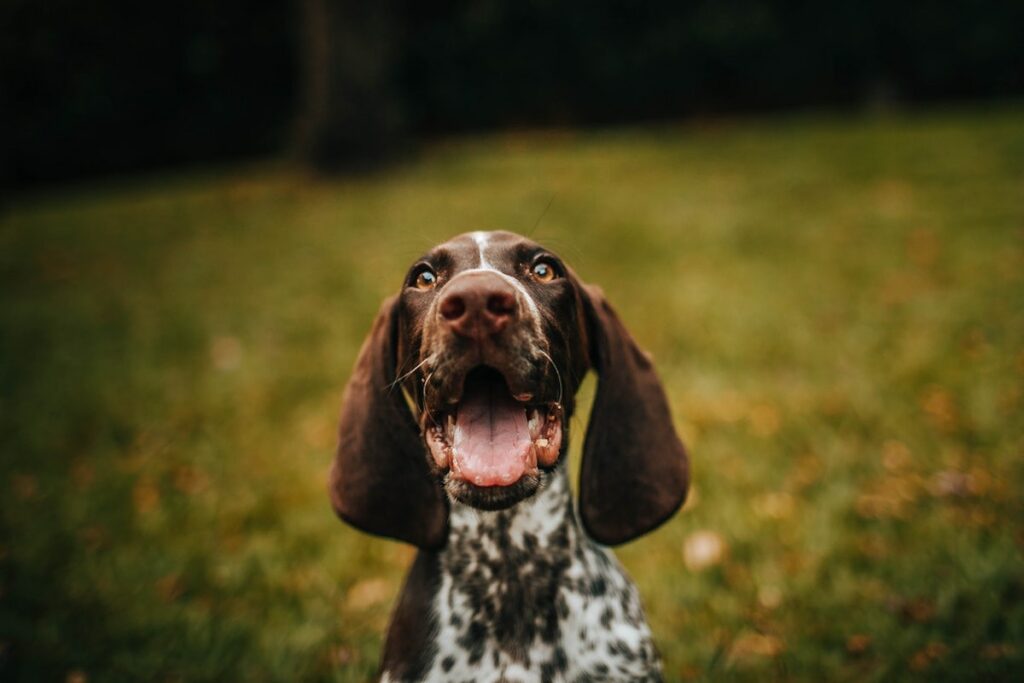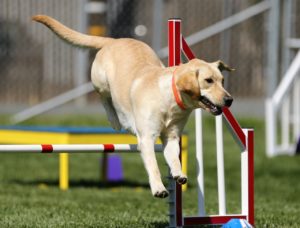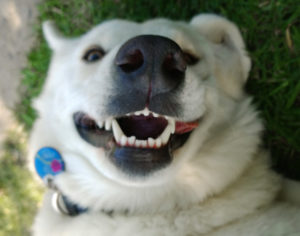Any dog owner knows that their pets aren’t particularly fussy about what they put in their mouths. Dogs will taste just about anything they find, providing it smells good enough. It should be no surprise then that dogs are quite prone to dental problems. While they might have hardier mouths than our own, dogs don’t often receive dental care. Few owners give as much attention to their dog’s teeth as they should, which can lead to some bad dental problems with dogs. This can be painful for your dog in the long run.

Treating a dog’s dental problem can be a bit tricky. As with any other medical treatment for our pets, it is difficult since they lack the ability to express when they’re in pain. That makes it important that you know the symptoms of dental problems in dogs and when to watch out for them. If you can spot the problem early, you have an easier time treating it. You also need to be aware of how to treat and prevent a dog’s dental problems though.
Just as important as watching for problems is the prevention of potential problems in the first place. Preventing dental problems in dogs is a lot easier than treating them after they become problem. Making good oral health a part of you and your dog’s normal routine goes a long way towards making them happy and healthier.
Dental Problems in Dogs
The dental problems a dog can have are about as diverse as those in humans. However, many dental problems have similar symptoms to each other. This can be confusing, so a vet’s trip is always going to be helpful when you spot these symptoms.
It can be hard to spot an actual problem going on inside your dog’s mouth. Most owners don’t routinely inspect their dog’s teeth. Even then, they might not be able to tell what a dog’s gum disease is when they spot it in the first place. These are some of the common symptoms of dental problems in dogs:
- Red gums
- Bleeding gums
- Blood on toys or chews
- Cries or other sounds when eating
- Avoiding Eating
- Loose teeth
- Bad breath
- Sores in the mouth
- Lumps in mouth
- Blood in saliva
- Lumps or discharge in saliva
- Avoiding being touched on their head
- Avoiding eating
- Eating only on one side of their mouth
- Sneezing
- Loose or broken teeth
- Discolored teeth
These symptoms are a lot easier to spot than looking inside of a dog’s mouth. If you spend a lot of time with your dog, you’ll likely be able to pick up on the subtler symptoms. Going off their food or a serious deterioration in there are going to be noticeable.

Common Dental Problems
While those symptoms occur in a lot of different dental problems for dogs, each has its own characteristics. These are the most common dental problems in dogs, the ones you’re likely to experience.
- Plaque and Tartar Build-up – This is a build-up of plaque on your dog’s teeth. If left untreated, these bacteria will build up. It can then cause tooth decay and gum irritation. Eventually, it can cause the loss of teeth. The main symptoms are bad breath and bad gum health around the plaque.
- Periodontal Disease – This is a disease of the gums and areas of bone in the mouth. The bacteria will end up under the gums, where it eats away at bones and tissue under there. This is a development of gingivitis and regular gum disease; it can have serious complications over time.
- Oral Infections – This can occur where gaps or open space in a damaged tooth becomes a breeding ground for germs. This can lead to swelling in your dog’s face as the infection becomes encouraged.
- Broken or Loose Teeth – Physical damage to your dog’s teeth can cause a lot of problems. This will make it harder for them to chew. The damaged areas are also vulnerable to bacteria which can lead to other dental problems in dogs.
These are some of the major dental problems that affect dogs. Prevention is the best treatment for dental problems in dogs. If you want to avoid the more difficult treatment down the line, you should take some steps to ensure your dog has good oral hygiene.
How to Prevent Dental Problems in Dogs
The best way to treat a dental problem is to prevent it in the first place. Thankfully, this isn’t going to be too much extra work or pain for your dog. Keeping a decent oral hygiene routine can be simple as long as you keep to it. These are some tips to make sure you’re keeping your dog’s mouth as healthy as possible.
- Diet – A lot of your dog’s oral hygiene is going to come down to their diet. Dogs have evolved to have pretty healthy mouths provided they eat natural foods. A dog that has more natural and healthy dog food will have better teeth. Some bones have the right type of bacteria which helps to prevent the build-up of tartar.
- Regular Check-Ups – These are vital. Make sure your dog is receiving regular check-ups on their oral health. This can be done by your vet.
- Check Their Teeth – Look inside of your dog’s mouth and check for symptoms at least once a week. If you spot anything that doesn’t look right, you should go to a vet.
- Brushing teeth – A dog who eats a natural diet won’t have much need for tooth brushing. However, most dogs don’t live on what they can naturally forage! Brushing your dog’s teeth reduces tartar build-up and is generally one of the most effective ways to avoid dental problems.
- Tartar Remover – You can use tartar remover products in your dog’s water as a form of mouth wash. This is a great way to help clean the teeth of a dog that struggles with having their teeth brushed.

How to Treat Dental Problems in Dogs
Those tips can help you prevent dental problems in dogs. However, if your dog gets a dental problem you’ll have to do something different. Dental problems can be difficult to treat, especially since your dog is likely to be in a bit of pain. This is what you need to do to treat the most common forms of dental disease in dogs.
How to Treat a Dog’s Gum Disease
Gum disease is really common in dogs, so most owners will face it at some point or another. How you treat gum disease in dogs is ultimately going to depend on how severe it is.
A mild case of gum disease can be addressed with a dental cleaning. This will have to be done by a vet though. It requires some anesthetic and is a big clean of the tartar and bacteria that has accumulated in your pet’s mouth.
If the gum disease is more advanced, then antibiotics might be needed. Your vet can take a look at your dog’s gums and decide if they need antibiotics prescribed, and this should calm their gum disease.
How to Deal with Tartar Build up in Dogs
Tartar build-up is the firsts step towards most serious dental problems in dogs. If you spit this build-up, removing it before it causes an infection is a good way to take an advanced precaution. These are the best ways to deal with tartar and plaque build-up in a dog:
- Diet – You can clean tartar build-up from your dog by giving them the right diet. Look for dog food that can help to clean their teeth. There also chews that are made to clean the tartar off of your dog’s teeth. This treatment isn’t suitable for more severe tartar build-up, but it can work for mild cases.
- Brush Your Dog’s Teeth – This is the best way to deal with a build-up. Brush your dog’s teeth regularly to remove it using a dog toothbrush.
- Vet – Visit the vet for full clean if the tartar build-up has gotten to a stage that you can’t deal with it at home.
Tartar build-up is the main cause of the more severe types of dental problems in dogs. This makes it important to deal with when you spot it, to prevent it from becoming something worse.
What to do About Your Dog’s Dental Problem
The oral care of a dog is important, just like it is in other animals like cats. It is often neglected though. There are a lot of different dental problems that dogs can get, and the majority can fly under the radar without their owner knowing that their dog might be in pain. Keeping on top of your dog’s oral health is important for their overall wellbeing.

To keep them healthy, you need to keep an eye out for the common symptoms of oral health problems in dogs. However, you should also take preventative action. This includes feeding them a healthy diet and brushing their teeth. If you can manage this, along with regular vet trips, you should able to keep your dog’s mouth healthy and free from painful dental problems.







